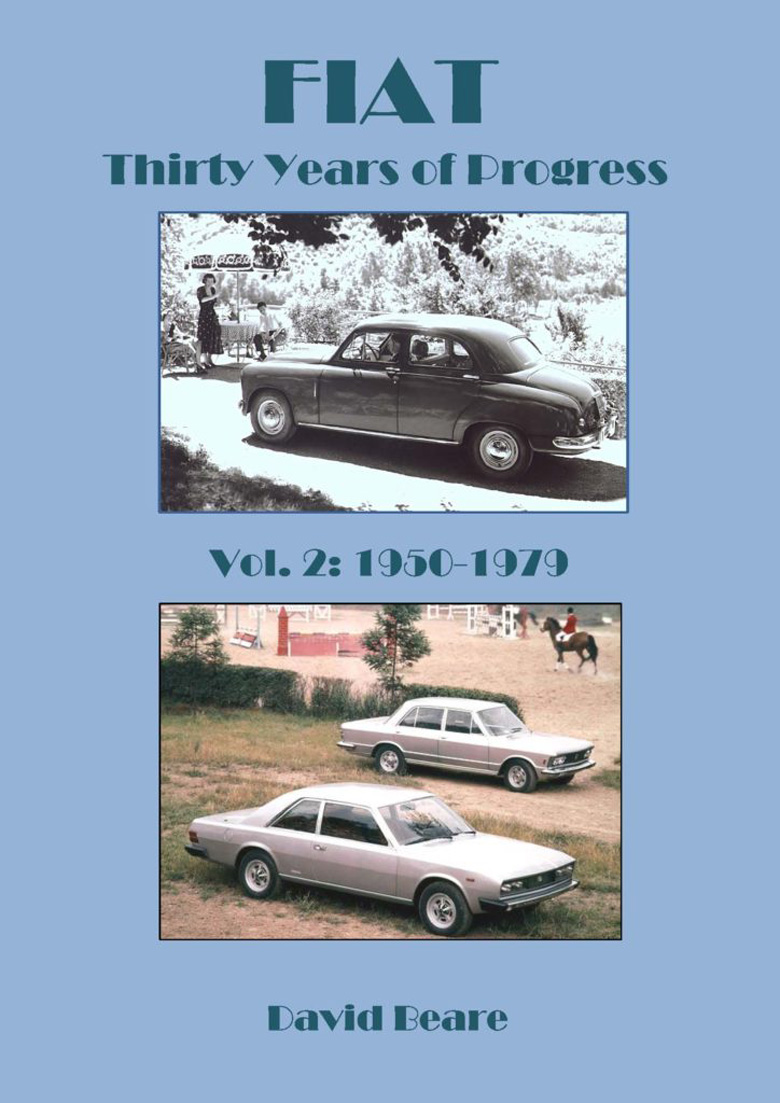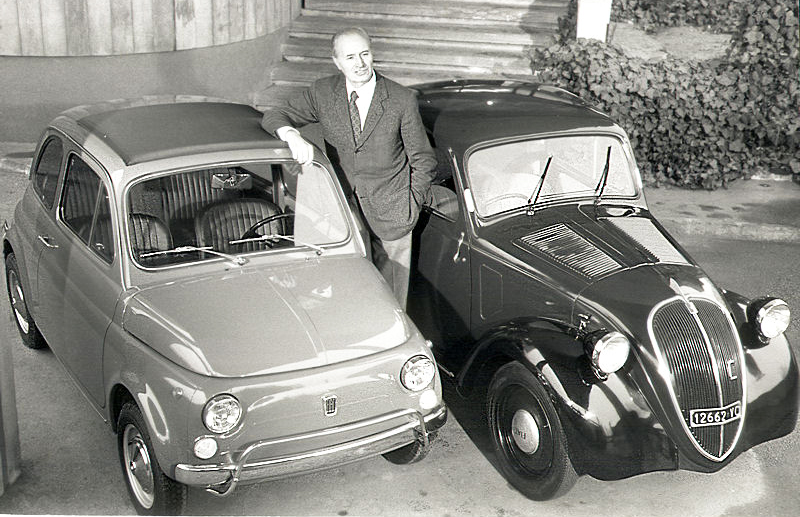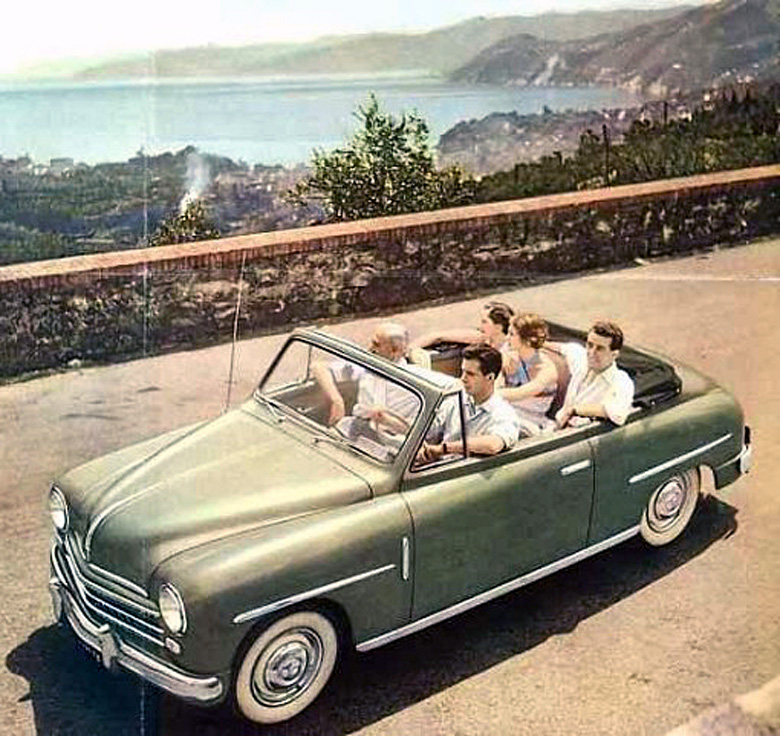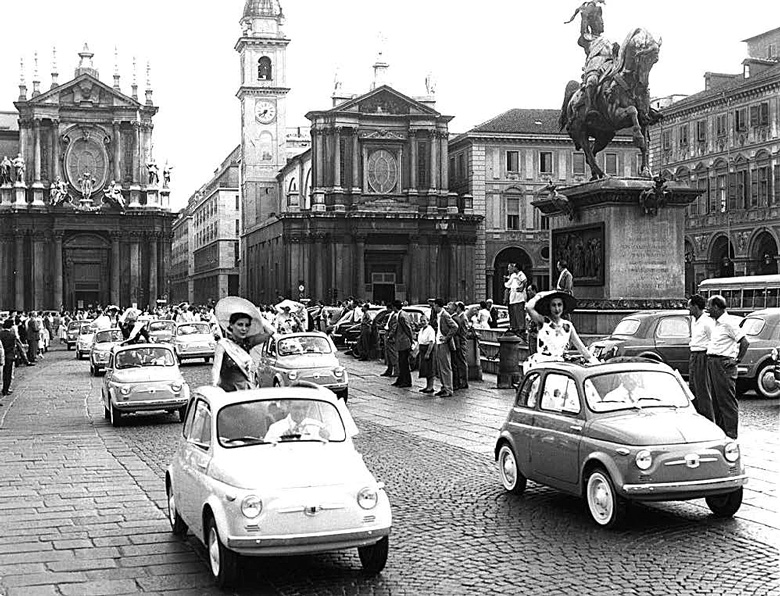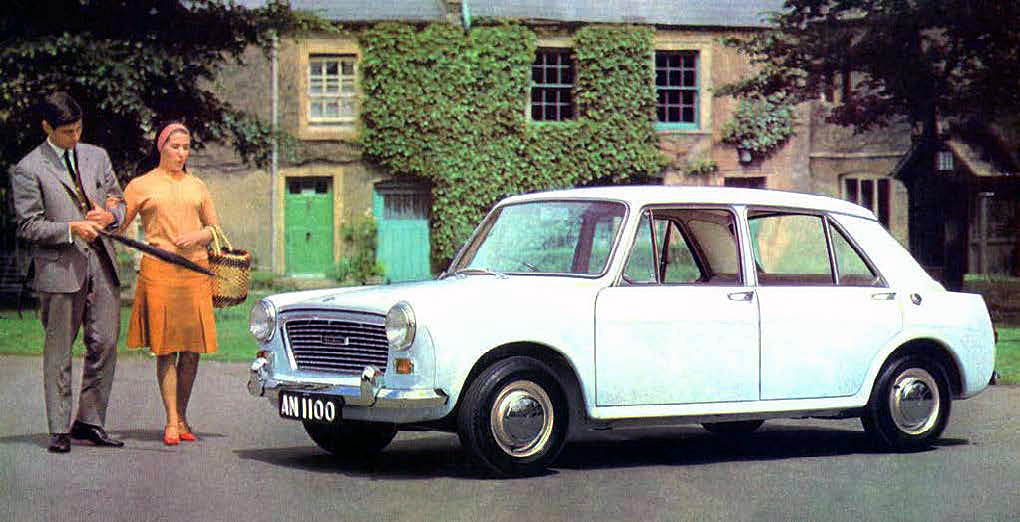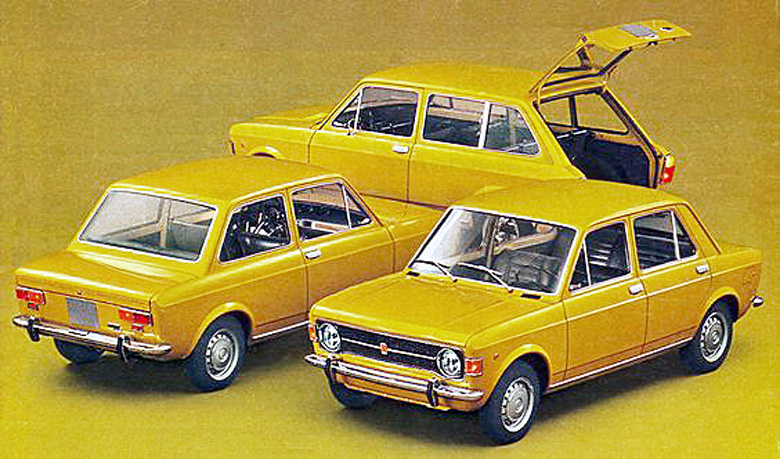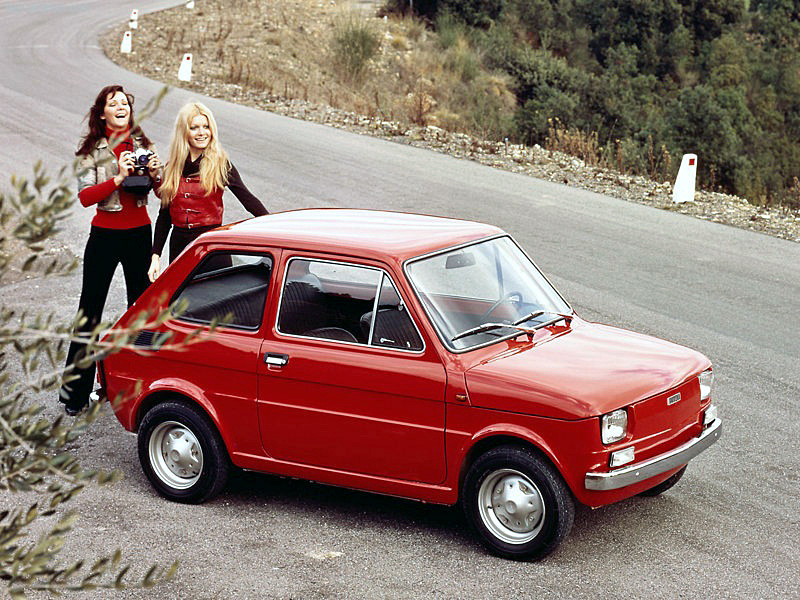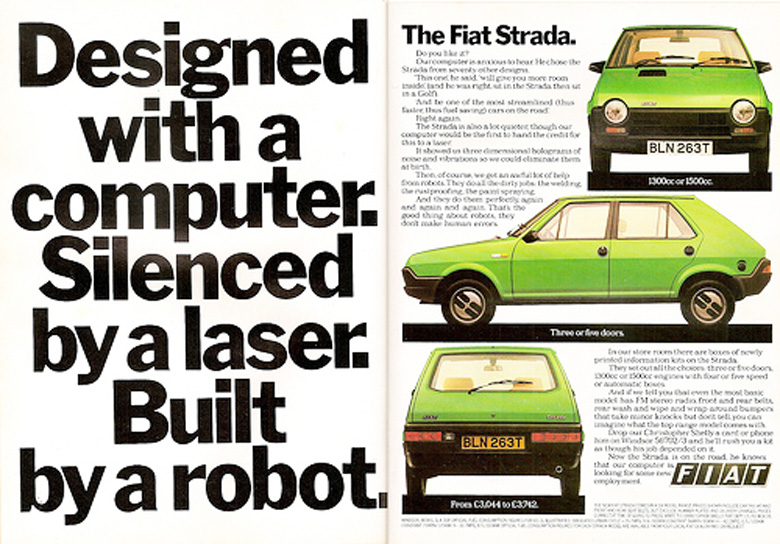Review by Pete Vack
All images from the book
At his home in old Wales near an ancient Norman castle, David Beare, historian extraordinaire, does his own thing and we are glad of this, because of his wonderful look at the flat twins of Panhard published in 2012, a two part history of Hispano Suiza and Pegaso published in 2017, and his comprehensive look at Fiat, Volume 1, which was completed early last year.
And we are now very happy to see that Fiat Volume 2, which takes the narrative from 1950 to 1979, has been finished and is available worldwide. In Volume 1, we enjoyed Beare’s use of colorful graphics, interesting anecdotes, and his knack of including social history as a means of background and to provide a deeper understanding of the forces that shaped the history of the company.
He does all this and more with Volume 2. Both the author and the readers are fortunate because, unlike many published books, Beare is his own publisher and has few limits as to the number of pages, photos, or the depth of the subject. This is important, because Beare can include interesting aspects of each model rather than just an over-the-counter rundown of each Fiat.
In one such aside, Beare speculates that the 1953 Iso Rivolta Isetta failed to gain sales in Italy due to the interference of Fiat, who, dominating that segment of the market, saw the Isetta as a potential rival. “Fiat’s aged 500C looked antediluvian compared to Rivolta’s Isetta and management at Mirafiori must have been very disturbed at the launch of this new upstart,” wrote Beare. “Renzo Rivolta may have been ‘persuaded’ to eliminate the price advantage the Isetta should have had over Fiat’s 500C.” But this may not have been conjecture. Winston Goodfellow, in his remarkable and comprehensive study of Iso Rivolta (1995, Giorgio Nada) also heard from people within the Iso organization who recalled that paperwork was held up, or Fiat would put up a wall “…that would stop any type of procedure we were doing.” Fiat of course bought an Isetta, and determined how to price the Nuova 500 to make sure it would sell better than the Isetta. For Rivolta, the failure to gain a foothold in Italy resulted in the perusal of foreign licenses, the most successful being the BMW Isetta, which helped the Munich based firm revive its postwar fortunes.
While we are fairly well versed in the history and specs of the Nuova 500, Beare sheds light on the adaptation of the 500 for use in the more powerful Steyr-Puch, and the story of how Dante Giacosa fought hard for the upright two cylinder, four cycle Fiat engine used in the Italian version rather than a flat twin as put forth by engineer Oscar Montabone, only to have Steyr-Puch install their own flat twin of 700cc into the Austrian version. The Steyr-Puch could be easily modified and was so quick it was a favorite of the Austrian police.
As the seventies approached, the use of front wheel drive was being investigated, and Fiat used the firm of Autobianchi to test out the ideas that would lead to the Fiat 128. Here, Beare compares the Autobianchi Primula to the BMC 1100. The Primula was extremely similar to the BMC effort. Underneath, however, it featured the transmission hung out at the end of the engine, rather than under it per BMC practice, making it easier to maintain and to build. It set the pattern for not only the Fiat 128 to come, but almost all other transverse front wheel drive designs.
A few pages away, Beare discusses the 124 but adds another nice bit of information not generally included in similar car histories. In addition to describing, in detail, the Lampredi designed three-piece belt driven DOHC layout of the 124 Spider engine, he tells us about a French cartoon book, Le Journal de Spirou, highly popular in France which often had accurate technical descriptions of new cars, including the 124 sedan, claiming that it offered ‘Good going for not much money.’
Incredibly, the sixties were both creative and productive for Fiat, which saw the 850, Fiat Spider, Dino Spider and coupe, the 124 and 125 sedans, the pace setting Autobianchi Primula and the smashing new Fiat 128. But by the end of the decade, things were suddenly turned upside down. The era of the great economic miracle was ending, and the social strife in both France and Italy made things very difficult for auto manufacturers, particularly Fiat. Again, Beare handles the social upheavals with insight and fairness, explaining both sides of a very complex situation. Why were workers….and students, in the streets and striking? Perhaps it was a case of too much too soon, for the industry, for the country, and for the workers. Beare explains the reasons behind this phenomenon.
By 1969 Fiat had acquired Lancia and 50 percent of Ferrari, and in a complex deal with Citroën, obtained a 15% stake in the company via a new holding company, PARDEVI, and gave Fiat a dealer network in France, much to De Gaulle’s grief. Giacosa retired, Valletta died, and it seemed that no one was quite sure of what drivetrain layout to use, FWD, conventional, or rear engine rear wheel drive. In the seventies, the replacement for the 850 line was tooled up and called the Fiat 127, with front wheel drive. The 130, introduced in 1971, was at the opposite end, literally, with a very conventional layout. Then along comes the Fiat 126, a Giacosa design with a rear engine on its side. These cars sold well, but the quality was poor and none had that magic something that blessed the earlier Giacosa designs.
A high point of the seventies was the Fiat X1/9, but the low point may have been the Ritmo/Strada, ‘designed by a computer, built by a robot’ as the ad said. The not very successful Ritmo was poignant end to an era that presented some of the best human engineered automobiles which oozed with character, and ended with politics and computers behind the drafting boards. The advent of robotics meant that a huge number of people were out of work, but at least did not interrupt production with strikes. Yet the strife was far from over as the end of the century approached.
David Beare has provided us with an engaging, accurate, and well-defined look at post war Fiat. There is a section for source references, a complete bibliography, image credits and a complete index will be published for all three volumes in the last book of the series.
We are looking forward to his third and last book on the subject, Fiat from 1980 to 1999.
Book and ordering information:
Publisher: Stinkwheel Publishing, 2019
Treddol, Chirbury Road, Montgomery SY 15 6QW
Order from www.stinkwheel.co.uk
Fiat: Thirty Years of Progress Vol. 2 by David Beare
ISBN 978-0-9547363-7-8
Soft cover, 208 pages, 250 color images, approximately 200 B&W
£34 plus £14.90 airmail to U.S.
